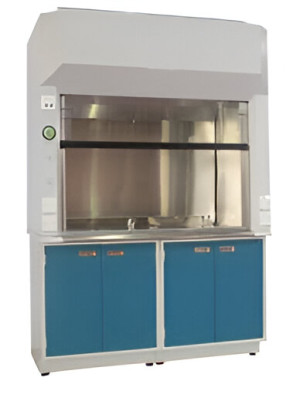Fume Hood with Scrubber
A fume hood with a scrubber is a critical piece of laboratory equipment designed to ensure the safe handling of hazardous chemicals and to protect laboratory personnel from exposure to harmful vapors, gases, and fumes. Here's an overview of its components and functionality:
Fume Hood
1. Structure:
- Hood: Enclosure with a sash (movable front window) made of transparent material, usually glass.
- Work Surface: The area inside the hood where experiments and procedures are conducted.
- Exhaust System: Ventilation system that draws air from the hood, preventing contaminants from escaping into the lab.
2. Types:
- Ducted Fume Hoods: Connected to external ductwork, venting fumes outside.
- Ductless Fume Hoods: Use filters to clean the air before recirculating it back into the lab.
Scrubber
1. Purpose:
- Air Purification: Removes or neutralizes harmful substances from the air exhausted from the fume hood.
2. Types:
- Wet Scrubbers: Use a liquid (usually water) to absorb and neutralize fumes.
- Dry Scrubbers: Use solid materials (such as activated carbon) to adsorb contaminants.
3. Components:
- Spray Chambers or Towers: Where the liquid or solid adsorbent interacts with the contaminated air.
- Packing Material: Enhances contact between the scrubbing medium and the contaminants.
- Mist Eliminators: Remove droplets from the cleaned air stream before it is exhausted.
How They Work Together
- Containment: The fume hood contains hazardous fumes generated during laboratory processes.
- Exhaust: The contaminated air is drawn through the exhaust system.
- Scrubbing: Before being released outside (in the case of ducted systems) or recirculated (in ductless systems), the air passes through the scrubber.
- Neutralization/Adsorption: The scrubber neutralizes or adsorbs harmful substances.
- Clean Air Release: The cleaned air is then either vented outside or recirculated into the lab.
Advantages
- Safety: Protects lab personnel from exposure to hazardous substances.
- Environmental Protection: Reduces the release of harmful chemicals into the environment.
- Compliance: Helps laboratories meet safety and environmental regulations.
Maintenance
- Regular Inspections: Ensure all components are functioning correctly.
- Filter/Scrubbing Medium Replacement: Periodically replace filters or scrubbing materials as needed.
- Cleaning: Regularly clean the hood and scrubber components to prevent buildup and ensure efficiency.

